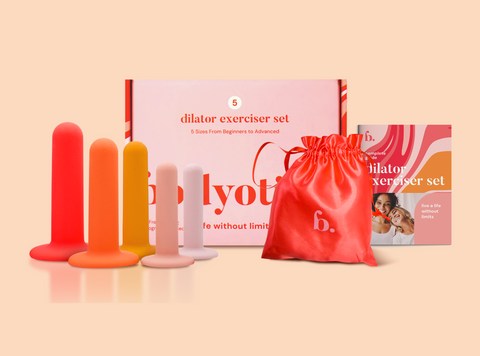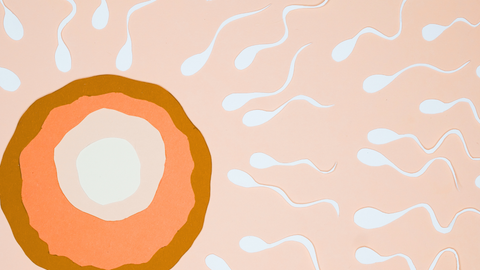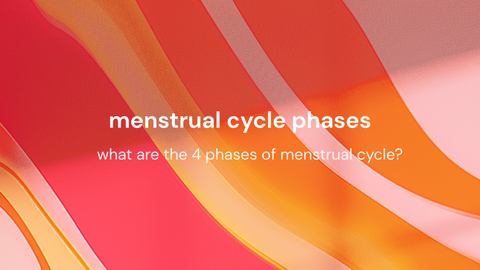Menstrual Disc vs Menstrual Cup: Which One Is Better for You?

Today, a larger number of people are shifting from single-use products and trying out reusable alternatives. However the choice between Menstrual Disc and Menstrual Cup can be a bit confusing. Each of these alternatives is environmentally friendly, durable and gentle on the human body. Still, they have different ways of functioning, different advantages, and different user backgrounds.
If you are curious which one is the best for your body, comfort requirements, or daily schedule, then this tutorial will assist in making your decision confidently!
Understanding the Basics
Before comparing the two, let’s look at what each product actually is and how it works.
What Is a Menstrual Disc?
A menstrual disc is round and flexible ring with a basin for fluid collection and is soft. It is positioned at the back of the vagina above the cervix. This area makes it almost invisible if the placement is correct. Reusable menstrual discs can hold approximately the same amount of fluid as a couple of tampons or even a larger menstrual cup.

Bodyotics has the most suitable menstrual disc for not just beginners but also regular users. The Comfydisc Reusable Menstrual Discs come in two sizes (S+M) so there is no confusion. This makes them perfect for those who are not sure if they need a small period disc or a large one.
What Is a Menstrual Cup?
A menstrual cup is a soft & bell shaped silicone cup that collects period fluid inside the vaginal canal. It sits lower than a disc. Cups need to be inserted with a fold and sealed with suction. Many users like menstrual cups because they last for years and suit a wide range of flows.
If you prefer the cup style, Bodyotics also offers the Comfyflow Reusable Menstrual Cup which fits well with the brand’s care sets.

Menstrual Disc vs Menstrual Cup: Key Differences to Consider
Now that we understand the basics, let’s look at what sets these two options apart. This comparison will help you decide which one feels more natural for your comfort, lifestyle, and menstrual needs.
1. Placement and Comfort
Menstrual Disc
A disc sits in the vaginal fornix, which allows it to “self-position.” Once inserted, it stays in place without suction. Many people say they cannot feel it at all. This high placement also allows mess-free period sex, something cups cannot offer.

Bodyotics discs, especially the Comfydisc Rainbow Edition, are known for their softness and flexibility. The smooth silicone adapts to your shape for long hours of comfortable wear.
Menstrual Cup
A cup sits lower and relies on a suction seal. With the right size, it can be very comfortable. But for some, the suction or firmness takes time to adjust to. Cups also cannot be worn during intercourse.
2. Capacity and Leak Protection
Menstrual Disc
Reusable menstrual discs typically hold more than cups. Because a disc sits high and wide, it can collect up to 6 times more than a regular tampon. This makes discs a strong choice for heavy flows.
Bodyotics Comfydisc offers up to 12 hours of leak-free protection, and the two sizes included in each pack help you manage different flow days.
Menstrual Cup
Cups also offer 8–12 hours of protection. Their capacity varies by size and brand. Cups are reliable but may leak if not sealed perfectly. Proper insertion takes practice, especially for beginners.
3. Ease of Use and Learning Curve
Menstrual Disc
Many users find discs easier to insert because they fold into a simple oval shape. Since they self-position, there’s less need to check the seal. Removal can take a little practice, but the quick-release string on Bodyotics discs makes this step simple.
Menstrual Cup
Cups require learning how to fold, position, and create suction. For some, this is challenging at first. Once mastered, cups are easy to use. But beginners often appreciate the more intuitive feel of discs.
4. Mess-Free Period Sex
Menstrual Disc
One of the biggest advantages of a disc is that you can have sex while wearing it. Because the disc sits higher, it leaves space for penetration while still collecting fluid. This is a major benefit for many users.
Menstrual Cup
Cups cannot be worn during sex. They sit too low and use suction, which makes intercourse uncomfortable or impossible.
5. Cleaning and Maintenance
Menstrual Disc
Rinse with warm water and mild soap, then reinsert. For deep cleaning, you can sterilize it with boiling water. Bodyotics makes this even easier with the Comfycase Menstrual Cup Sterilizer, which sterilizes both discs and cups.
Menstrual Cup
Cups require the same cleaning routine. Using a sterilizer like the Comfycase keeps the process quick and hygienic.
6. Cost and Sustainability
Both products are reusable, eco-friendly, and cost-effective.
A single Bodyotics disc or cup can replace thousands of disposable products over the years. This helps the planet while saving you money. For those who want a complete set, the brand also offers:
- Comfyflow Menstrual Cup & Disc Set
- Comfycycle Reusable Period Disc & Care Kit (6 pcs)
These bundles include everything you need for long-term, sustainable period care.
Which One Is Better for You?
The right choice depends on your lifestyle, comfort preferences, and menstrual needs. Here’s a quick guide to help you decide.
Choose a Menstrual Disc If…
- You want the best menstrual disc option that adapts to your body
- You prefer a small period disc or large period disc without choosing a fixed size
- You want mess-free sex during your period
- You struggle with cup suction
- You have a heavy flow and need higher capacity
- You want something you barely feel once inserted
Bodyotics Comfydisc ticks all these boxes. The S + M sizes included in each pack make sizing simple and beginner-friendly.
Choose a Menstrual Cup If…
- You don’t mind a suction-based product
- You prefer a product that sits lower
- You want a classic reusable option many people already use
- You don’t need the ability to have period sex while wearing it
A cup is a great option for those who are comfortable with traditional menstrual cup designs.
Final Thoughts
Menstrual cups and menstrual discs are amazing and have the same utility as disposables. They help to minimize their trash and are cost-effective and they also provide protection for long hours. When weighing the options of Menstrual Disc vs Menstrual Cup, it all boils down to your routine, comfort and preferences.
If you are after a soft, flexible, and beginner-friendly option with a high capacity and at the same time the possibility to have mess-free intimacy, a menstrual disc may be your ideal partner. The Bodyotics Comfydisc is a product that combines innovation and comfort to give you a clean and confident period experience.
Do you want to choose a period that is better? Check out Bodyotics reusable discs, cups and care accessories and find the solution that works best for you.
Frequently Asked Questions
Are discs or cups better for beginners?
Discs often feel easier because they require less technique. Bodyotics discs also come with instructions and a soft design that supports new users.
Can I wear a disc or cup overnight?
Yes. Both can be worn for up to 12 hours, depending on flow.
Do discs leak?
When inserted correctly, discs create a gentle seal. The Bodyotics Comfydisc is designed for high comfort and leak protection.
Do cups leak?
Cups rely on suction. If the seal forms properly, they won’t leak. Improper placement can cause issues.
Which one is more comfortable?
Many users say discs feel more natural because they sit higher and do not rely on suction. But comfort is personal, and some people prefer the familiar feel of a cup.












